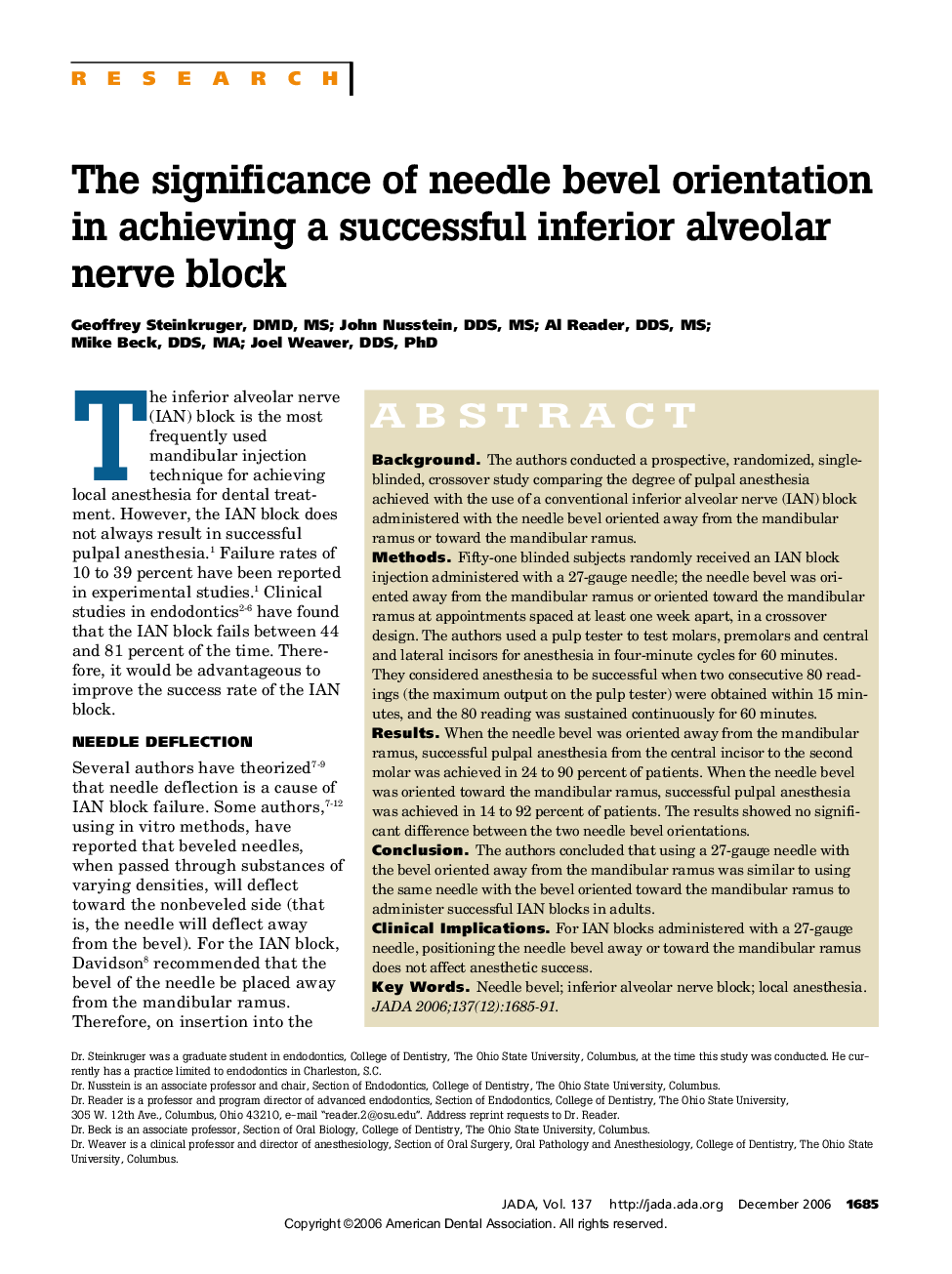| Article ID | Journal | Published Year | Pages | File Type |
|---|---|---|---|---|
| 3139909 | The Journal of the American Dental Association | 2006 | 7 Pages |
ABSTRACTBackgroundThe authors conducted a prospective, randomized, single-blinded, crossover study comparing the degree of pulpal anesthesia achieved with the use of a conventional inferior alveolar nerve (IAN) block administered with the needle bevel oriented away from the mandibular ramus or toward the mandibular ramus.MethodsFifty-one blinded subjects randomly received an IAN block injection administered with a 27-gauge needle; the needle bevel was oriented away from the mandibular ramus or oriented toward the mandibular ramus at appointments spaced at least one week apart, in a crossover design. The authors used a pulp tester to test molars, premolars and central and lateral incisors for anesthesia in four-minute cycles for 60 minutes. They considered anesthesia to be successful when two consecutive 80 readings (the maximum output on the pulp tester) were obtained within 15 minutes, and the 80 reading was sustained continuously for 60 minutes.ResultsWhen the needle bevel was oriented away from the mandibular ramus, successful pulpal anesthesia from the central incisor to the second molar was achieved in 24 to 90 percent of patients. When the needle bevel was oriented toward the mandibular ramus, successful pulpal anesthesia was achieved in 14 to 92 percent of patients. The results showed no significant difference between the two needle bevel orientations.ConclusionThe authors concluded that using a 27-gauge needle with the bevel oriented away from the mandibular ramus was similar to using the same needle with the bevel oriented toward the mandibular ramus to administer successful IAN blocks in adults.Clinical ImplicationsFor IAN blocks administered with a 27-gauge needle, positioning the needle bevel away or toward the mandibular ramus does not affect anesthetic success.
